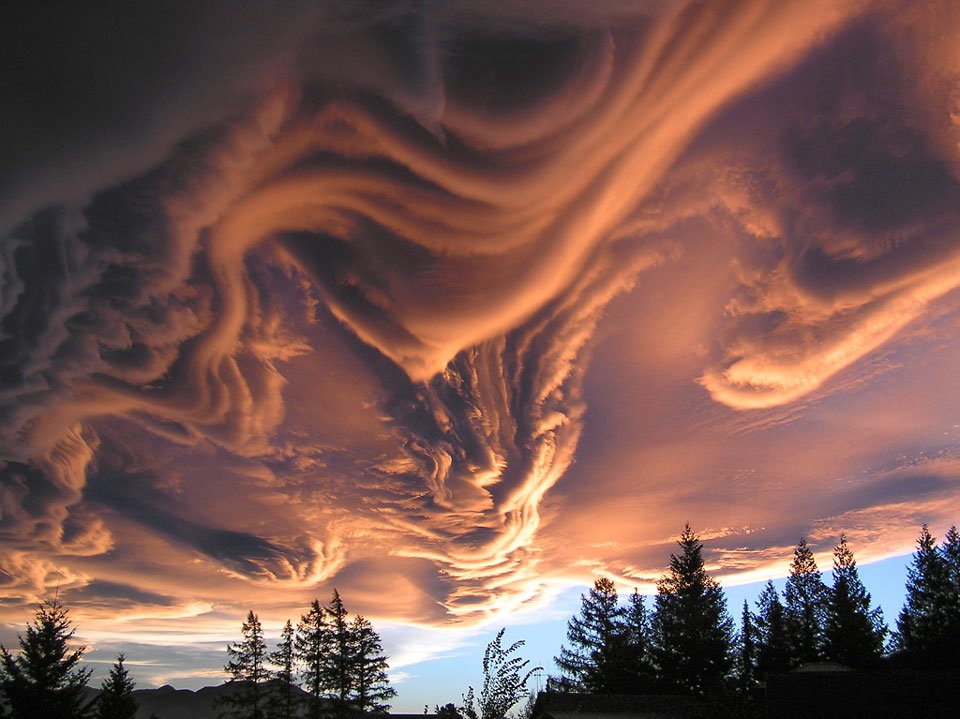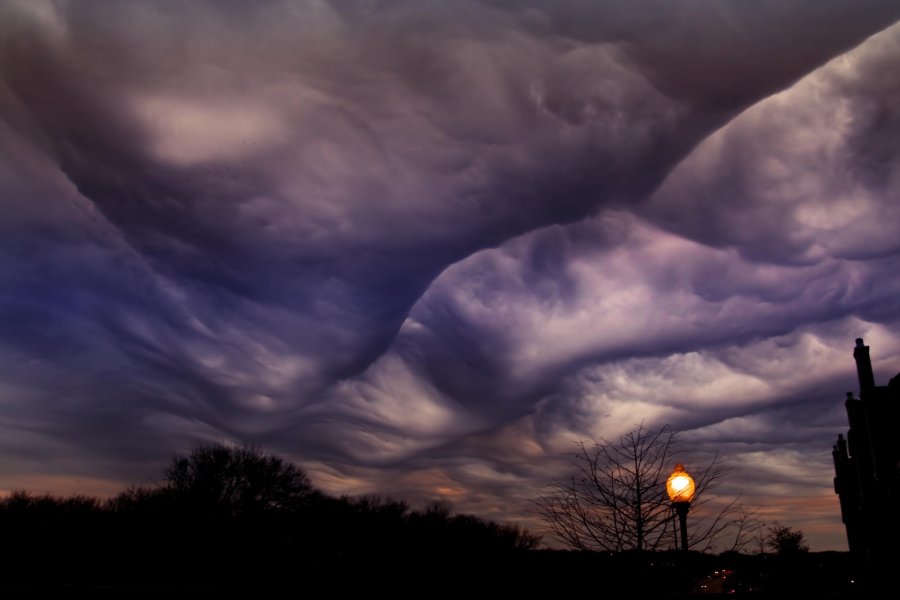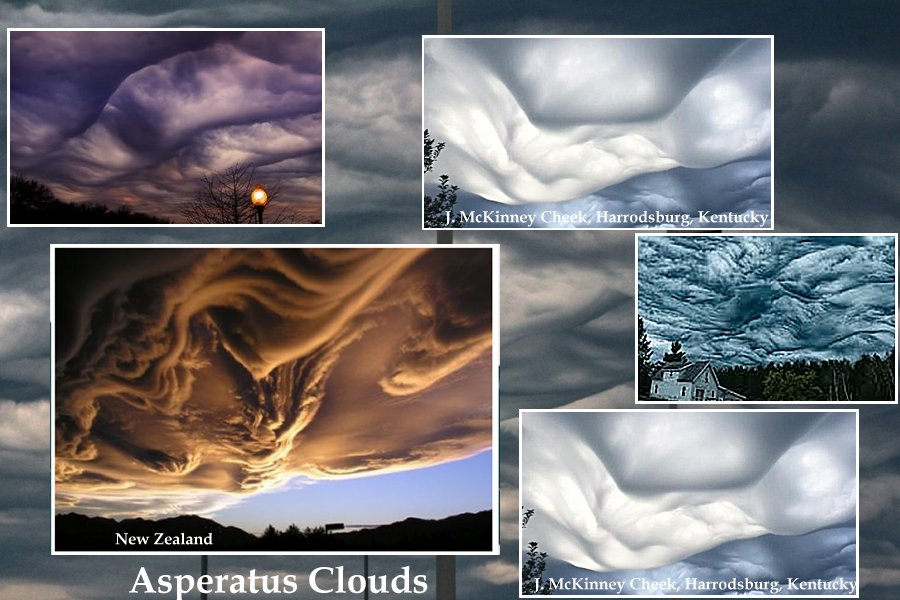Asperatus Clouds: Intriguing, Spectacular And Ominous-Looking Cloud Formation That Gives Dramatic Visual Effects
MessageToEagle.com – There is a new, very spectacular cloud formation, which remains relatively unstudied. and is not yet entirely explained.
Many sky watchers reported to seeing this unusual atmospheric structure in several places around the world. Asperatus clouds have been spotted mainly over the Great Plains in the United States, and other parts of the world, in France, Norway, Estonia, Scotland, England.
The name of this intriguing cloud is inspired by the Latin word ‘aspero’, meaning to make rough. This term was used by Roman poets to describe the sea as it was roughened by the cold north wind.
The clouds look like turbulent and soft undulating wave motions. Their appearance gives an impression of the surface of the ocean, only looking at it from below.

Cloud experts say that plenty of heat in the atmosphere is needed to produce enough energy for formations of asperatus clouds. Accompanying factor is also interaction between very moist air and very dry air.
Some experts believe that these clouds form when ice crystals in the clouds sink, but are too large to evaporate in the air below them.

Due to the very large amount of water vapor, asperatus clouds appear very dark and ominous but they are not any meteorological doom. However, their formation gives dramatic visual effects.
See also:
Hector The Convector: Rare Huge Thunder Cloud Forming Almost Daily On The Same Place
Where Is The Hottest Place On Earth?
The ominous-looking asperatus clouds are related to thunderstorm activity and have been usually observed during the morning or midday hours ahead of a thunderstorm or line of storms.
However, they are not necessarily accompanied by stormy weather and can form without the development of thunderstorms.
It was quite a long time ago – more exactly in 1951 – a new type of cloud was officially recognised by the UN’s World Meteorological Organization.
Now, asperitas cloud is finally being accepted as an official classification by the World Meteorological Organisation.
Copyright © MessageToEagle.com All rights reserved. This material may not be published, broadcast, rewritten or redistributed in whole or part without the express written permission of MessageToEagle.com
Expand for referencesRelated Posts
-
 Humans Have Between 9 to 21 Senses In Total – Aristotle Was Wrong To Claim We Have Only Five Senses
No Comments | Feb 17, 2017
Humans Have Between 9 to 21 Senses In Total – Aristotle Was Wrong To Claim We Have Only Five Senses
No Comments | Feb 17, 2017 -
 Childhood Home Of Jesus May Have Been Found Underneath The Sisters Of Nazareth Convent
No Comments | Nov 24, 2020
Childhood Home Of Jesus May Have Been Found Underneath The Sisters Of Nazareth Convent
No Comments | Nov 24, 2020 -
 Our Universe Is Conscious – Panpsychism Theory Suggests
No Comments | Jul 15, 2018
Our Universe Is Conscious – Panpsychism Theory Suggests
No Comments | Jul 15, 2018 -
 Mystery Of The Vanishing Hitchhiker And Blue Bell Hill
No Comments | Aug 21, 2019
Mystery Of The Vanishing Hitchhiker And Blue Bell Hill
No Comments | Aug 21, 2019 -
 Can You Create A Universe From Nothing?
No Comments | Feb 26, 2013
Can You Create A Universe From Nothing?
No Comments | Feb 26, 2013 -
 Marine Creatures You’d Better Stay Away From
No Comments | Feb 5, 2016
Marine Creatures You’d Better Stay Away From
No Comments | Feb 5, 2016 -
 Extraterrestrial Super-Civilizations Can Hide Their Sun By Building A Biosphere Around It
No Comments | Mar 31, 2012
Extraterrestrial Super-Civilizations Can Hide Their Sun By Building A Biosphere Around It
No Comments | Mar 31, 2012 -
 Why Did Our Brains Start Shrinking 20,000 Years Ago?
No Comments | Apr 29, 2017
Why Did Our Brains Start Shrinking 20,000 Years Ago?
No Comments | Apr 29, 2017 -
 Leprechaun: One Of The Most Famous And Powerful Creatures Of The Irish Faerie Folk
No Comments | May 8, 2016
Leprechaun: One Of The Most Famous And Powerful Creatures Of The Irish Faerie Folk
No Comments | May 8, 2016 -
 The Bushido Code: Centuries-Old Unwritten Code For Ideal Samurai Warrior
No Comments | Dec 26, 2016
The Bushido Code: Centuries-Old Unwritten Code For Ideal Samurai Warrior
No Comments | Dec 26, 2016

